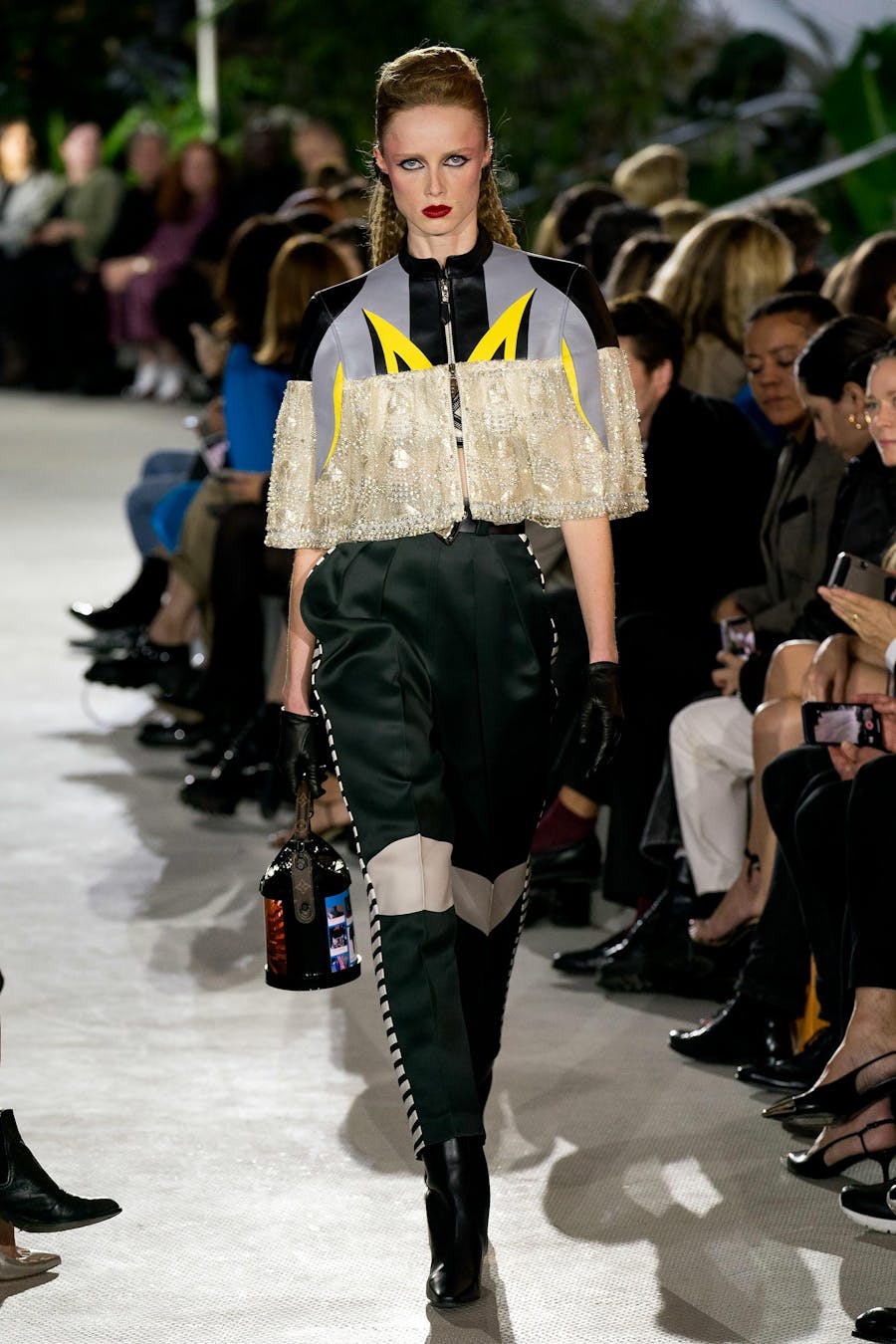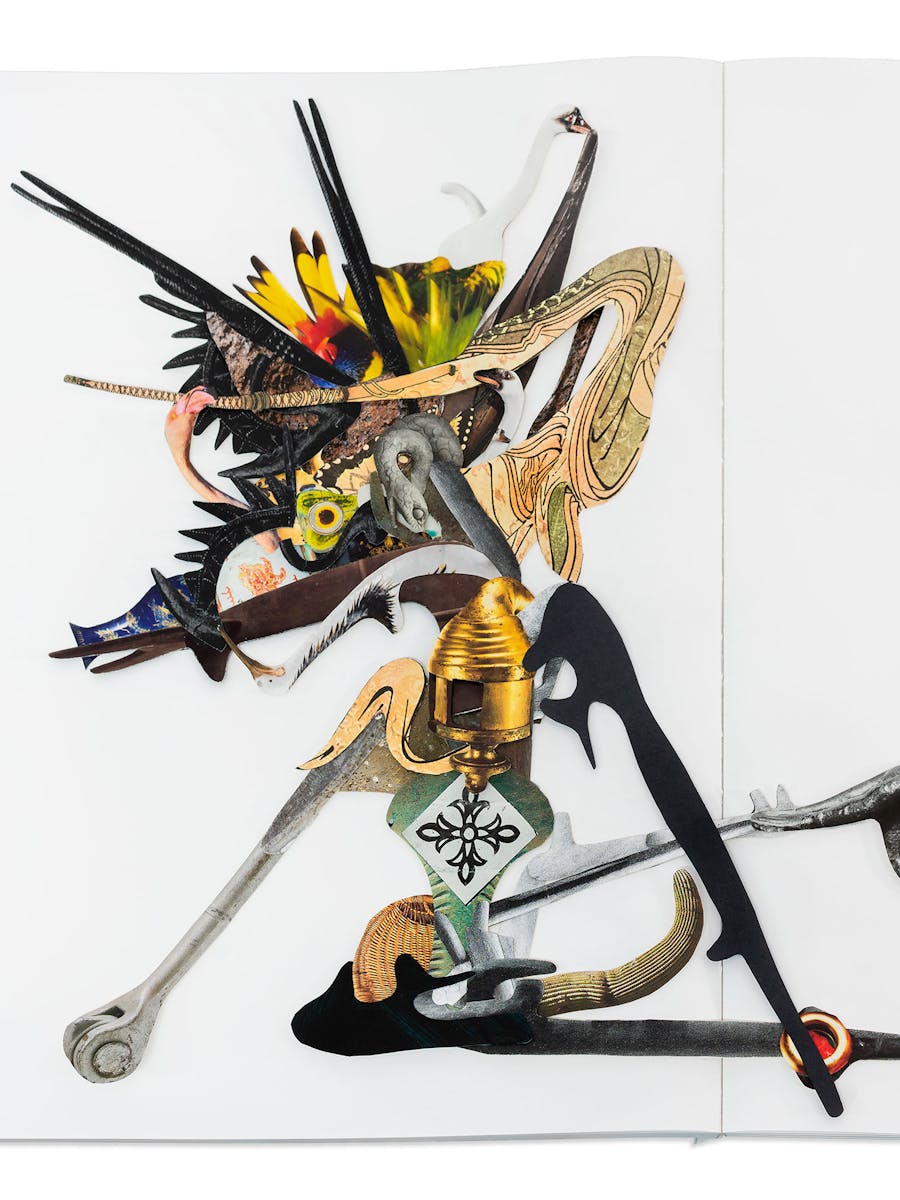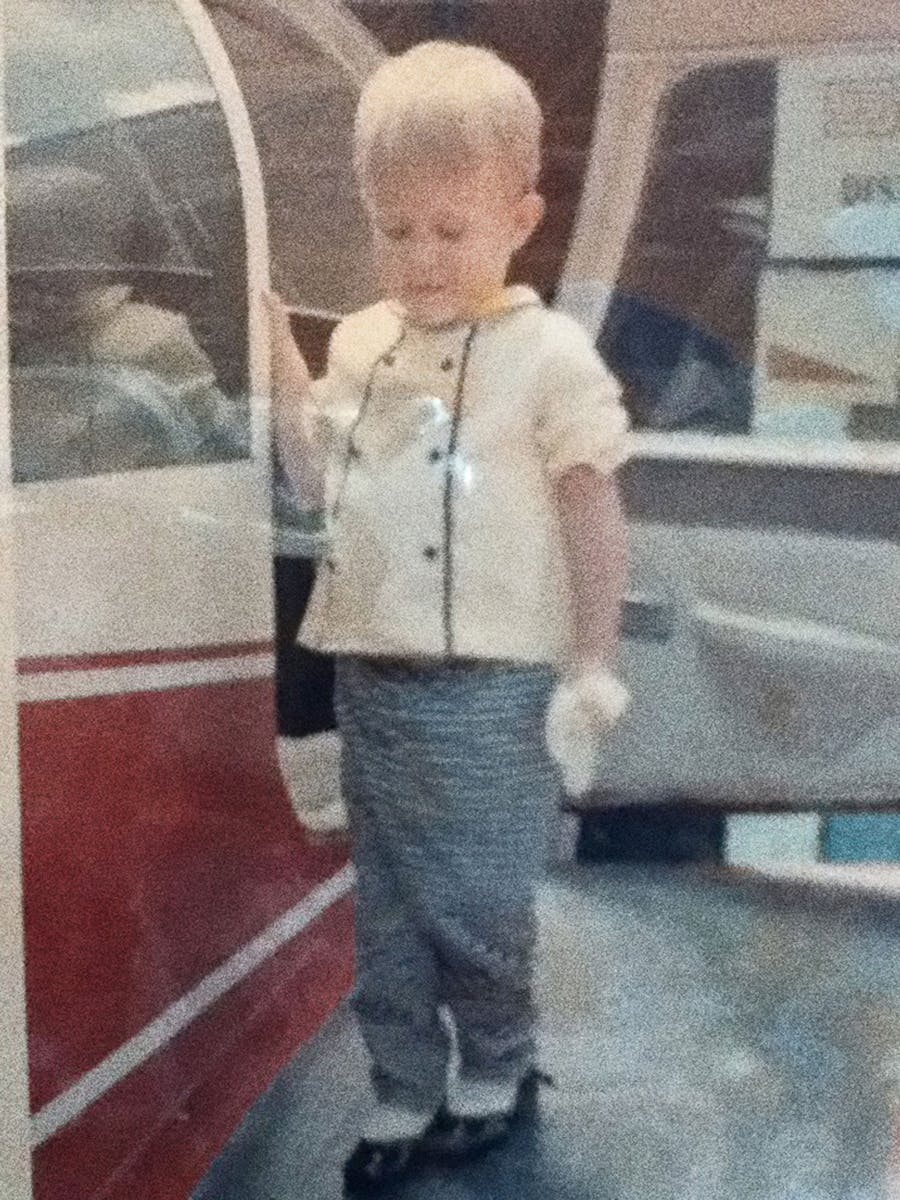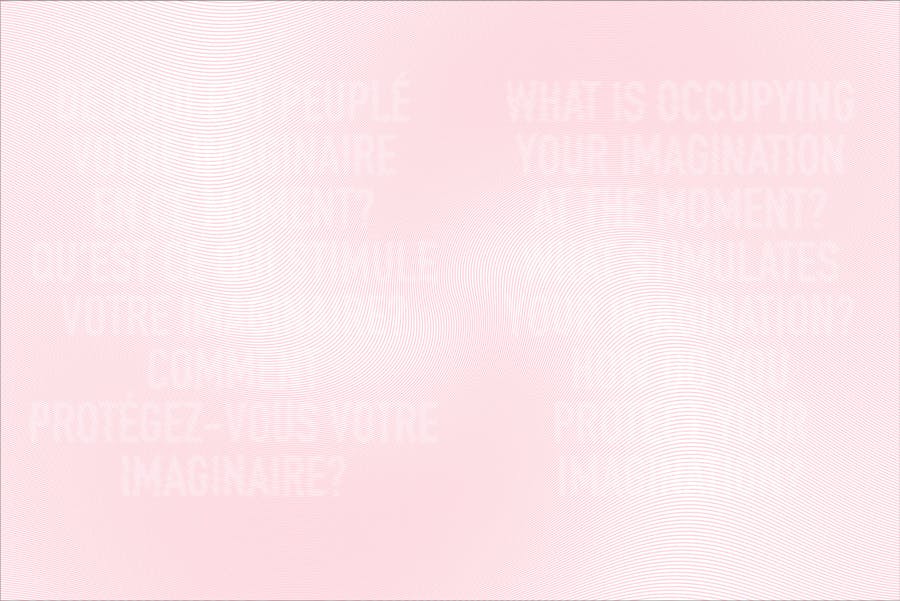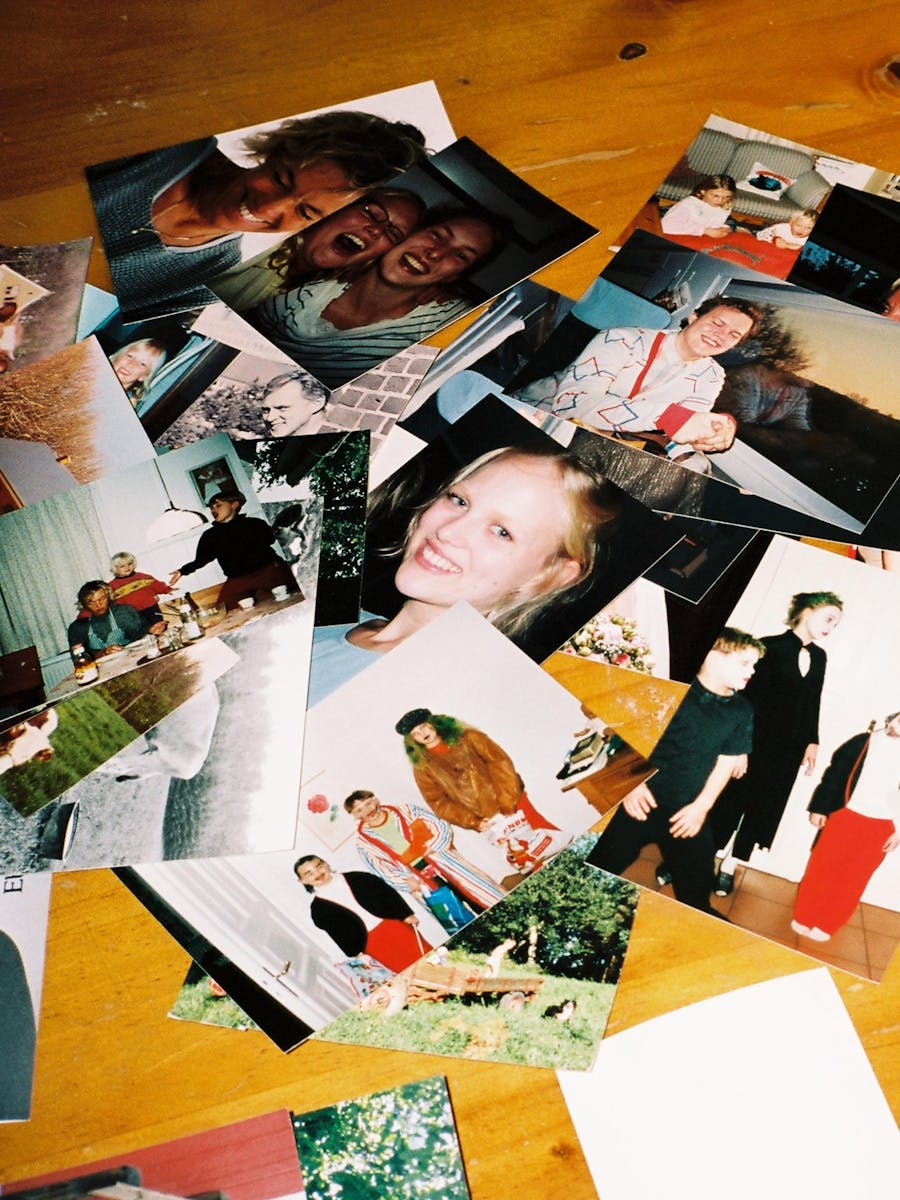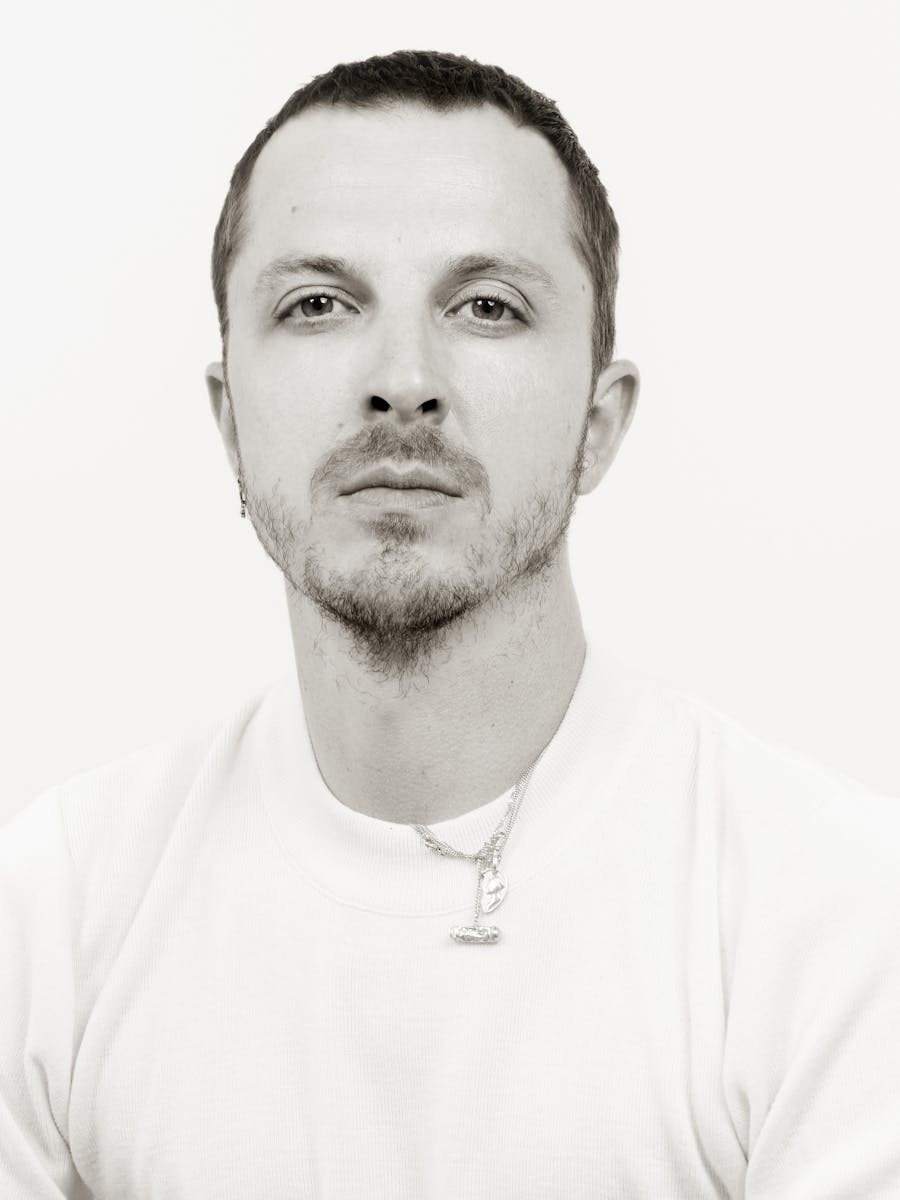Mary Katrantzou is a fashion designer who has built a highly successful independent business by transforming everyday items in the world around us into vibrant prints that have been at the foundation of her collage-style clothing. Trompe l'oeil garments that have reimagine images of everything from perfume bottles, banknotes and paint by numbers kits to postage stamps, insects and topiary. Her outfits are sartorial feats of daring, designed to stand out from the crowd. When a woman slips on one of her outfits she is instantly metamorphized into someone to be reckoned with, because who else would take on a Katrantzou creation ?
That sort of no holds barred approach to fashion has proven highly successful for the designer, who just celebrated the 10- year anniversary of her brand. A fact supported by the arrival of a new backer, the high profile Chinese heiress and investor Wendy Yu and the launch of a well-received capsule collection of colorful undergarments with Victoria’s Secret. And to celebrate the major milestone in the history of her company Katrantzou has also teamed up with MatchesFashion to create a mini reissue collection of 10 of her most iconic pieces from the past.
All of which is to say that Katrantzou is at a crucial point in her career. She has created well established codes, formed strong relationships with buyers and built a dedicated clientele, that including stylish heavy hitters like Cate Blanchett, Keira Knightley, Taylor Swift and Kerry Washington.
Here we take stock with the designer as she examines her past, explores how her own personal relationship to print and color transform her mindset and discuss what the future might look like for her attention getting company.
The theme for this issue is Avatar, which makes you an ideal person to interview for the magazine. The way you mix prints and unexpected motifs really can transform the women who wear them. Is that at the heart of what you like to do ? To transform them ? Or is it more to elevate them ?
⏤ It's one of the things you want to do. I think prints and colors can be a means of expression and communication. It's so direct and so visual that it has an effect and I think it's also a mood lifter, color in particular. But also I think when you combine print and color it should open up your mood. So it's interesting in that way, and I think it has the power to transform not only the woman and how she feels, but also her mood.
That is so true. Wearing one of your pieces is a real choice. You're choosing to get noticed.
⏤ Yes. I want women who wear my clothes to know that it's designed for women to stand out but I think the woman who wear my clothes are women who are confident. They wear them because they want to be bold and they want to express themselves. And I think that is liberating for women, she wants to be herself and she wants to feel like the best version of herself.
You have now past that crucial ten year mark of since you founded your company. So when we talk about transformation and the future of fashion can you talk a little bit about how you've transformed over this last decade? I remember going to your first presentation and it was your mom showing me your collection. So how do you feel about how you've transformed as a designer and as a businesswoman ?
⏤ I think you do have better understanding of who you are at ten years on because you take the time to reflect. When you're starting out you're tapping into, and experimenting with different elements – you're trying to find your brand. Since I started my brand was always very visual and it's still an image brand. But I think as you evolve your DNA your interests evolve, your conceptions. You evolve different silhouettes and different techniques and also you get to really understand the woman you are designing for. I'm more aware now about what my brand represents, whereas before I was more spontaneous and made more instinctive choices. Now I am more strategic about what I want to create around my brand.
And during your time as a designer have you seen the way women buy and wear clothing evolve ? What are the shifts that you've seen that you really are surprised about or find fascinating ?
⏤ I guess it's a much more open world. Even in the last ten years there's a much broader dialogue and I don't know if it's because we're more connected to everyone through social media or if I've traveled a lot more. But obviously that opens your mind and I think it allows you to shape shift a little bit because of what inspiration you have around you. And that's something to be celebrated. You know, women should be able to dress for the different role they play every day and feel free to kind of take on different characteristics of who they are, and express that to fashion.
⏤ I think that's a great thing and I think there's much more independent style now. Probably because there's so many options and maybe women are also in a period where they feel more confident. When I started I felt there were so many things stacked against me. One being the fact that I'm a woman. But now I feel actually that's something to be celebrated and protected. I am really proud of the fact that I am an independent woman owning my own business and being an entrepreneur.
As you should be! Another thing I find so unique about your brand is your ability to see inanimate objects in new ways. The manner in which you juxtapose different patterns and the way you place them together to create your designs shows that you see the world in a very unique way. Do you think comes from the fact that your mother was an interior designer ?
⏤ I think you know growing up around design there will always be some sort of association to design. I have always had, you know, an appreciation of that. We celebrated our ten years with a collection that was based on the idea of a collection about collectibles, because looking back I think one thread that connect my collections...from perfume bottles or a postage stamp or other objects like that – is that they're collectibles. So I think it's a balance between an appreciation of the material and the beauty found in design and how to contextual to a certain extent tension or balance or synergy between different ideas and different concepts. The methodology is that I think I work in a similar way to how a collage artist works, where you juxtapose a lot of different elements and your perspective changes in relationship to what you choose to juxtapose and how you render that.
So I know it's been reported a million times that you only wear black when you work. But I understand that when you are on vacation you wear anything but black. So to a certain extent you become an Avatar of yourself when you go on holiday.
⏤ For me I think progressively I wore more and more black over the years, to the point that it became a uniform and after kind of analyzing the why... it's because my work involves making so many decisions about color daily that you almost need a palate cleanser. So I think it's because you're in work mode and maybe it's partly not having to make a decision at all. And partly because you want to clear your head and not see any more color. But when you're on holiday I think it kind of you want to feel that you're on holiday and they think psychologically about not wearing black because it's kind of like uniform of work. Wearing color and prints on holiday, it allows me to feel that I'm taking time off. I feel, you know, kind of freer. It's a different Mary who is on holiday.
It's definitely a different Mary! Do you find, because you say you know color is uplifting, that wearing those pieces transform you? That they change your mood or attitudes?
⏤ Of course I do! The psychology of color has nothing to do with the theme of a collection. Some women are drawn to my work just for the color. And because it's a positive sign and because it's a happy brand in a way. So that alone in itself can be a really appealing for some women. I think the power of color goes far beyond fashion, has to do with everything around you.
Speaking about change, you recently collaborated with Victoria’s Secret on a capsule collection. Designing undergarments isn’t exactly in your creative wheelhouse, so what was that process like for you ?
⏤ I think every collaboration that we've done is different because of the nature of the product we are working on together. It’s always coming from a different arena than what I do. But that is what makes these sort of partnerships so interesting. They allow me to push, and extend myself in a new way. And immediately I thought that this would be an interesting project because there is a very intimate relationship between a woman and what she wears under her clothing. Also it is something that I wouldn't have been able to do on my own. It’s such a technical product, and being able to rely a lot on their technical expertise taught me a lot. And also it’s wonderful to be able to speak to a much wider audience.
You have a new backer. I imagine that the influx of funds from Wendy Yu is also going to help you reach a wider audience How does that change things for you ?
⏤ I think it hasn’t changed the way we work but what it has done is it allows me to look at my business and see where I want to be in five or 10 years’ time. Having the support of Wendy is really going to help us build brand awareness in China. Also it’s wonderful to have an ally that believes in you and is as an ambassador of your brand, someone who is like minded and can help you achieve your goals through their network and through having somebody to bounce ideas off of. And I think that's very important at this point in the business that we are able to plan ahead and not just make decisions based on the opportunities that come to me. But it’s more about really deciding what I want to do and how I want to grow it.
So breaking into the Asian market is a focus for your company in the coming years. Which is smart, considering that there is an historic love of bright colors in that region of the world. Can you talk a little bit about your process, the dissonance of the different pieces you put together, how does that process work for you ?
⏤ I think when I first started I was a lot more protective of, you know, of each season’s idea. I would stick to the idea we decided on and follow it through and I was a lot more controlling of that process. Now I think it's less important to me where a collection starts. It's more important to see how that idea is executed and allowing it to evolve over time. So I guess what's changed is that the collection could start with one strong theme, it can start with a mood. And then that will lead us to something and only when we find something concrete, that makes sense, do we really begin to define it. It's somehow become a more democratic process.
Now that you have a new investor and a bit more room to breathe, creatively speaking, what do you want to do with this brand ?
⏤ It hasn't really changed. It's just that you're more aware of what your brand is about and what inspires you. What makes you happy. Who your customer is. So it does allow you to see the bigger picture. I think when you start you are so focused on each collection and how to produce it. Who are the best supplier. Who are you going to hire as your team. Are you going to motivate and manage them. And so you are so bogged down with everything that you can’t see the larger picture. I think now I understand my strengths and I understand also what gives me joy and I think that should be celebrated. I now know what makes me happy in the design process. I'm inspired by all the amazing people I have met during my career; that’s one of the things I am most grateful for. It also has allowed me to focus more on certain elements that I enjoy doing, and growing those because I think that's the balance that you can have when you're an independent brand.
